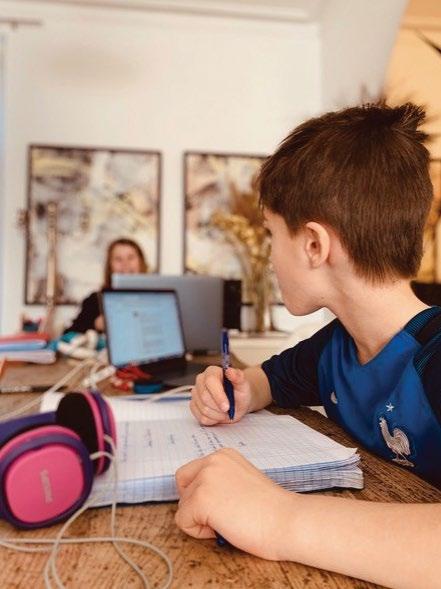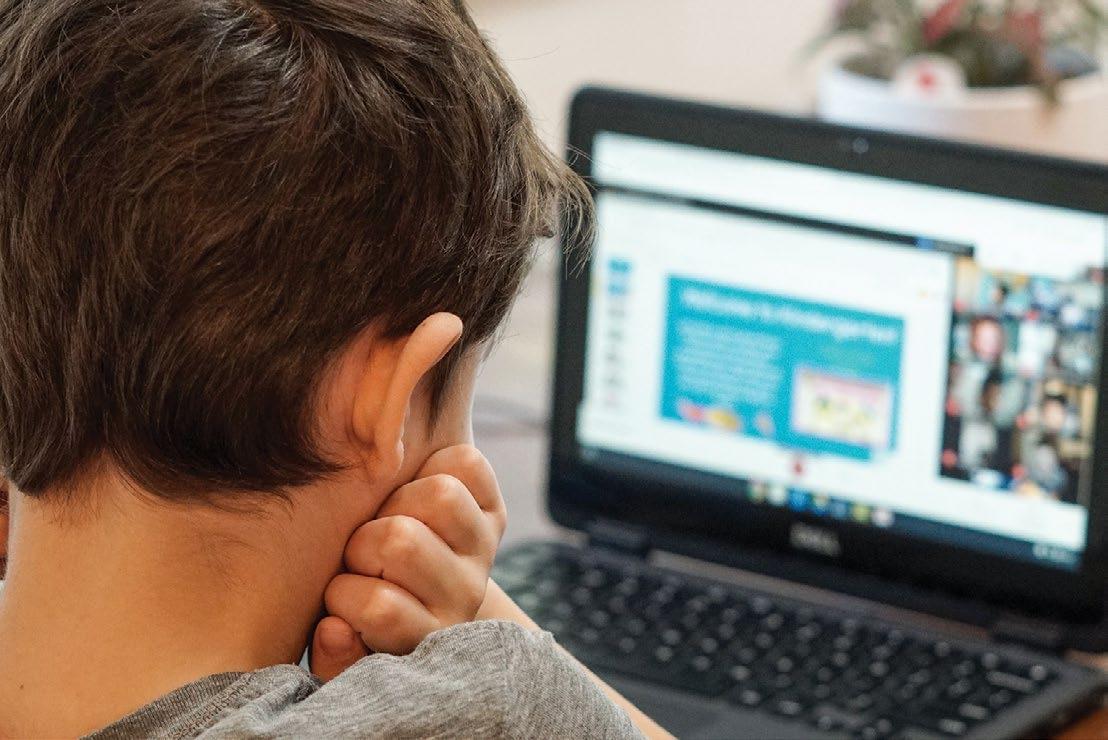
5 minute read
DIGITAL LEARNING
Credit: CFBL
The future of
Advertisement
DIGITAL LEARNING
COVID-19 HAS SHAKEN UP EDUCATION IN MORE WAYS THAN ONE. BUT IT’S NOT ALL BAD. VICTORIA EVANS LOOKS AT THE RISE OF DIGITAL LEARNING AND EDTECH
Hands up if remote learning from their homes, whether in London was a piece of cake? or poolside in Spain. It seems an Anyone? And hands It’s about obvious choice for home schoolers up whether your children were whizzier with the tech than moving towards or children who suffer from anxiety, victims of bullying or you? From Microsoft Teams to the classroom of those with needs which can’t be Google Classroom, Class Dojo, hangouts and breakout rooms, the future. met in a traditional setting. But they’re not the only pupils. it’s been a steep learning curve Esther Clark from Wey Education, for teachers and parents alike. And the parent company of InterHigh says: that’s just for the schools and families “Our school certainly attracts students that had access to tech, the internet and who are looking for a mainstream alternative printers for all those worksheets. Research by the but some of our students have found it fits Sutton Trust found that 10% of teachers said all better with their lifestyle or prepares them their pupils had adequate access to devices and for what they want to do in the future. Sometimes the internet. But despite the challenges, digital students prefer to learn at home while others are learning has a chance to become a more integral professional student athletes or artists and value part of daily school life. the flexibility we offer. We have whole families
The Lycée Winston Churchill in Wembley has of students who study at InterHigh because of embraced technology so well, that it launched their unique lifestyle or because they have moved LIL Online last Autumn. The programme allows overseas and want consistency in their learning children to study the full curriculum remotely, and value a UK education.” while enjoying a communal learning experience. The Good Schools Guide recommends that we It matches the studies followed by the on-campus “cast aside all preconceptions you’ve ever had students with daily, live interactive classes. The about schools. It certainly isn’t for everyone – bilingual curriculum provides crucial structure perhaps even for most – but for many families, and participation for those being home-schooled, it is viewed as (quite literally in some cases) a or perhaps those following their parents’ lifesaver, with a community of enthusiastic, international careers as they move around but interested and often (but not always) introverted can continue their studies before or after their self-starters that thrive on their four hours of time in London. For those who can’t attend intense tuition a day.” school in person, it’s the closest thing to being Perhaps one of the most exciting innovations there. in digital learning, is the use of artificial
But this internationally-minded school isn’t intelligence or AI. Award-winning educational the only one with a full curriculum offering technology company, CENTURY combines online. Non-selective InterHigh, established learning science, AI and neuroscience and in 2005, welcomes pupils from across the UK it’s coming to a school near you. It aims to and internationally. It is purely online, with aid teachers in the classroom by identifying no on-site teaching at all. Original head and gaps in knowledge, personalising content and founder Paul Daniell wanted to create a school targeting interventions as well as offering access that met everyone’s needs and used the best of to thousands of learning resources. It’s also traditional and modern ways of schooling. For designed to save on teacher workload across the teachers here, they’re used to giving lessons primary and secondary schools.
Cognita, which owns 82 schools in 11 countries, has bought in. After successfully introducing the software to selected schools in April last year, it has rolled out AI to 42 European schools as part of a new education transformation programme. This includes making sure students have digital devices and the curriculum and tools to go with them.
Ben Hine, Group Chief Information Officer at Cognita says, “This is about much more than pivoting to online learning in the event of future lockdowns. It’s about the integration of the most beneficial aspects of digital learning in education now and in the future. It will enable our students to develop their digital skills, preparing them for life beyond school. In addition, it will allow our teachers to use technology in the best way possible to support personalised learning, from providing feedback through to developing peer-topeer collaboration skills. It’s about moving towards the classroom of the future.”
Cottesmore School is amongst a host of other UK schools showing interest, recently inviting CENTURY Founder CEO Priya Lakhani to address parents about the role AI will play in the future. You’d be forgiven for thinking that CENTURY is targeting the private sector, but some of their flagship schools, highlighted on their website are state primaries. If schools get more educational bang for their buck, improve learning and teacher workloads, you can see why it would be appealing. But of course, using software requires the hardware, and the pandemic has highlighted the digital divide which exists in this country. Around 1.8 million children are unable to access Thomas Park - Unsplash a laptop, computer or tablet at home – and a further 559, 000 have no internet access. England rugby star Maro Itoje has called on business to step-up. “It is often said you judge a society on how they treat the vulnerable. Recent lockdowns have widened and exacerbated the negative consequences of the digital divide for the most vulnerable children in our society. This has the potential to have real and worrying ramifications on their life chances. The gap between the ‘haves’ and ‘have nots’ will widen considerably if nothing is done to address this problem. The digital divide in this country poses a real threat to our children and together we must do all we can to help address it”.

DIGITAL DIVIDE: HOW YOU CAN HELP
The digital divide existed before the Covid-19 pandemic and it doesn’t go away once the children go back to school. If you’d like to help, here are some useful starting points.
SARACENS FOUNDATION
The Digital Divide Campaign with Bloomberg
sfdigitaldivide.co.uk
VIRGIN MEDIA
In partnership with Brightstar, donate unwanted tablets.
virginmediatradein.brightstar.com
MAIL FORCE
Donate money or laptops for schools.
mailforcecharity.co.uk
COMPUTER AID
Will accept donations from businesses across the UK. They also offer a free collection service to individuals donating laptops.
computeraid.org
BUSINESS 2 SCHOOLS
If you are a business and you would like to donate devices or office furniture, email info@business2schools.com.








